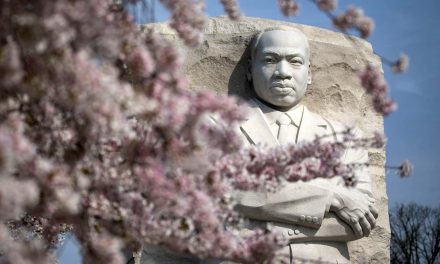
By Alexander N. Taylor, PhD Candidate in Economics, George Mason University
Confederate monuments burst into public consciousness in 2015 when a shooting at a historically Black church in Charleston, South Carolina, instigated the first broad calls for their removal. The shooter intended to start a race war and had posed with Confederate imagery in photos posted online.
Monument removal efforts grew in 2017 after a counterprotester was killed at the Unite the Right rally in Charlottesville, Virginia, where white supremacist groups defended the preservation of Confederate monuments. Removal movements saw widespread success in 2020 following George Floyd’s death at the hands of the police.
These events linked Confederate monuments to modern racist beliefs and acts. But whether monuments carry inherent racism or are merely misinterpreted requires further exploration.
Research by economist Jhacova A. Williams has shown that Black Americans who live in areas that have a relatively higher number of streets named after prominent Confederate generals “are less likely to be employed, are more likely to be employed in low-status occupations, and have lower wages compared to Whites.”
I study economic and political history and have researched the effects of Confederate monuments in the post-Civil War South. I found that these symbols helped solidify the Jim Crow era, which established segregation across the South and lasted from the 1880s until the 1960s.
These symbols were accompanied by increases in the vote share of the Democratic Party – the racist party that had supported slavery and, after the Civil War, supported segregation for another century. The building of these monuments was also accompanied by reductions in voter turnout. Further research I conducted shows that these political effects disproportionately occurred in areas with a larger share of Black residents.
In other words, as these monuments were erected, the vote increased for members of the then-racist Democratic Party, and people turned out to vote in lower numbers in predominantly Black areas. These findings demonstrate that a connection existed between racism and these monuments from their inception – and provide context for modern monument debates.
Monumental history
The South saw almost no monument dedications during the Civil War, which lasted from 1861 to 1865. Monuments first appeared during the Reconstruction era – 1865 to 1877 – when Southern states were occupied by the North and integrated back into the Union.
Reconstruction-era monuments in general did not glorify the Confederacy. These monuments largely honored the dead and were placed in cemeteries and spaces distant from daily life. They compartmentalized the trauma of the war, commemorating lives but not placing the Confederacy at the center of Southern identity.
As Reconstruction neared its end in 1875, a Stonewall Jackson monument erected in Richmond, Virginia, foreshadowed the different monuments to come.
The monument’s dedication drew 50,000 spectators and included a military-style parade. The potential presence of a local all-Black militia proved to be controversial. To avoid accusations of race mixing, organizers planned to place the militia and any other Black participants in the back of the parade.
The militia did not attend, likely in anticipation of the controversy, and the only Black Southerners present in the parade were formerly enslaved people who had served in the Confederacy’s Stonewall Brigade. This stark picture of Southern race relations served as a preview of political developments to come.
This trend continued after Reconstruction, which ended with the Compromise of 1877. This compromise settled the disputed 1876 presidential election, giving Republicans the presidency and Democrats, then a pro-segregation party, full political control of the South. Democrats subsequently established what would become known as Jim Crow laws across the South, an array of restrictive and discriminatory laws that disenfranchised Black Southerners and made them second-class citizens.
Monuments played a cultural role in establishing the Jim Crow South. Unlike Reconstruction monuments, post-Reconstruction monuments were erected in prominent public spaces, and their focus shifted toward the portrayal and glorification of famous Confederates. Monument dedication ceremonies were particularly popular around the 50th anniversary of the beginning of the Civil War, peaking in 1911.
Additional Confederate monuments have been dedicated since that period, but those numbers pale in comparison to the monument-building spree of 1878 to 1912.
Monumental effects
My research investigates the political effects of Confederate monuments in the Reconstruction and early post-Reconstruction – 1877-1912 – eras, namely their effects on Democratic Party vote share and voter turnout. I expected monuments’ potential effects to be directly related to their centrality to everyday life and glorification of the Confederacy. This is the primary difference between soldier-memorializing Reconstruction and Confederate-glorifying post-Reconstruction monuments.
I expected to find little political effect from soldier-memorializing Reconstruction monuments, but some pro-Jim Crow effects from Confederate-glorifying post-Reconstruction monuments. As monuments moved from cemeteries into central public spaces such as parks and squares, I expected them to affect voters’ decisions. That is precisely what I found.
During Reconstruction, counties that dedicated Confederate monuments saw no change in voter turnout or Democratic Party vote share in biennial congressional elections. These symbols were soldier-memorializing and physically separate from public life and did not influence voter decision-making.
However, when monuments began to glorify the Confederacy and shifted into public life, political effects emerged. Counties that dedicated monuments in the early post-Reconstruction period saw, on average, a 5.5 percentage point increase in Democratic Party vote share and a 2.2 percentage point decrease in voter turnout compared with other counties.
As monuments changed, so did their effect on the public. Glorifying public monuments communicated to the public that the Confederacy was worth preserving, thus strengthening Democratic majorities and lowering participation in the political process.
Larger Democratic majorities alongside lower voter turnout already suggests Black Southerners, who almost exclusively voted for Republicans at that time, were voting less in areas with monuments. I conducted further exploration and found that these political effects disproportionately occurred in counties with larger Black populations. This suggests that Black voters were more responsive to Confederate monuments, which suppressed their political activity by signaling they were not accepted by the local community.
The effects of post-Reconstruction monuments suggest that they played a role in continued racism throughout the South into the early 20th century.
Their controversy today demonstrates the values still conveyed by their presence in society. Recent research has demonstrated the long-run effects of the spread of Southern white culture and prejudices across the United States post-Civil War, connecting it to higher levels of modern-day Republican Party voting and conservative values.
It is thus no wonder Confederate monuments, as prominent symbols of pro-Confederate, Southern white culture, continue to be – and are likely to remain – cultural flashpoints.
SteveHelber (AP) and Rogelio V. Solis (AP)
Originally published on The Conversation as When Confederate-glorifying monuments went up in the South, voting in Black areas went down
Support evidence-based journalism with a tax-deductible donation today, make a contribution to The Conversation.
















